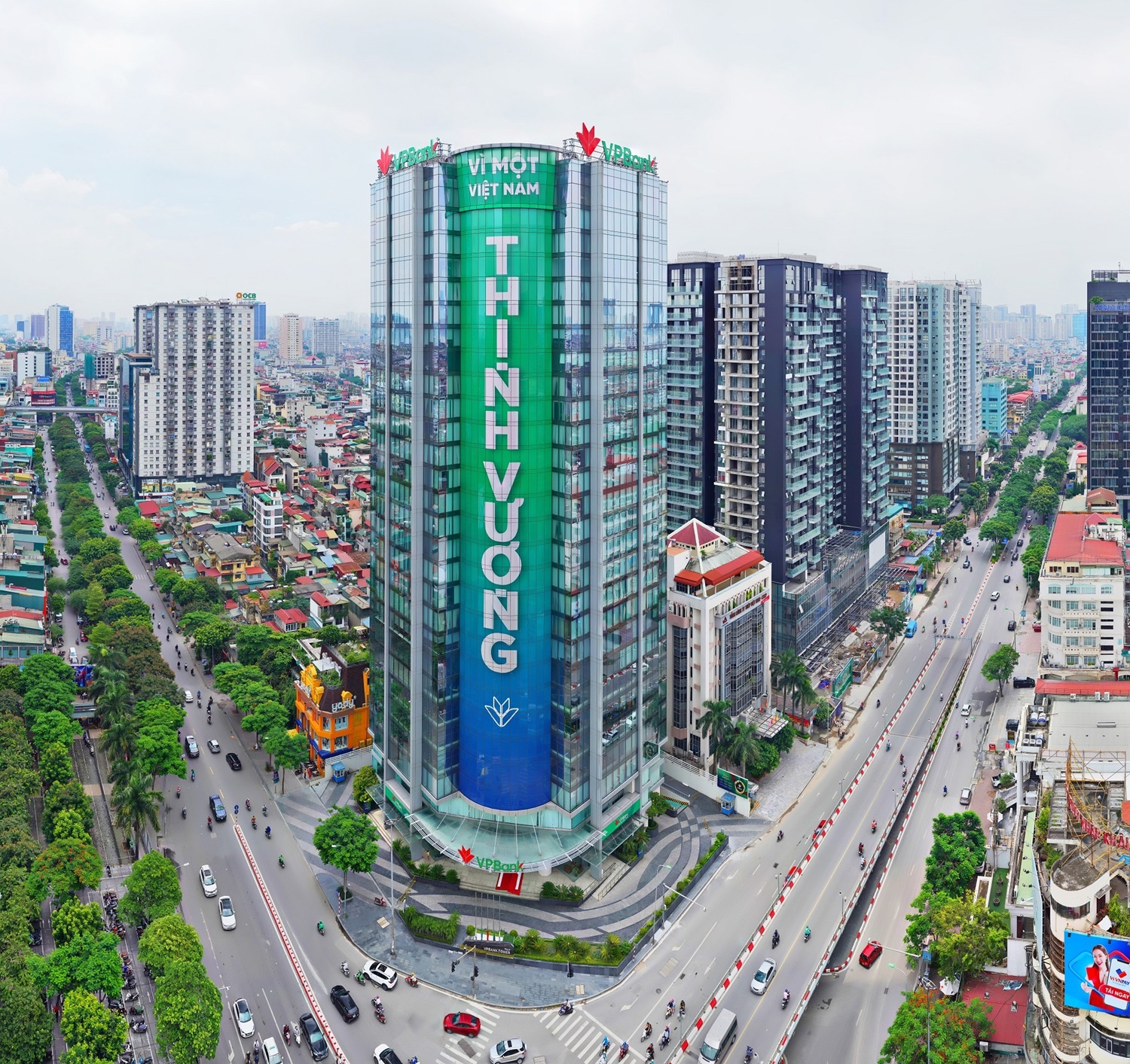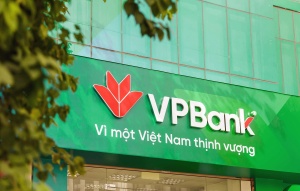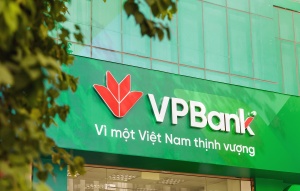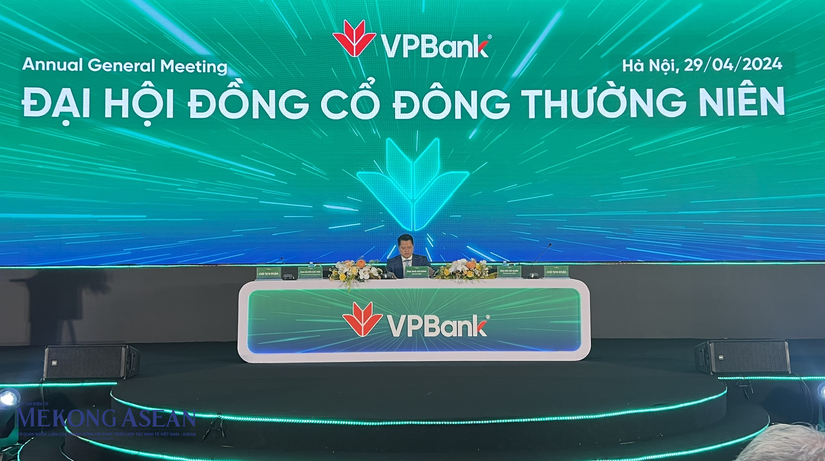VPBank optimises business opportunities in Q2 to develop sustainably
The bank took full advantage of business opportunities arising from positive market developments in the first half (H1), and has high expectations on a stronger economic recovery in H2 to help it meet its annual business targets.
Managing a composed balance sheet and effective performance
 |
| VPBank headquarters in Hanoi |
Manoeuvring through difficulties at the beginning of the year, VPBank managed to maintain credit growth, disbursing into various segments and industries that successively met the diverse capital needs of the economy.
The bank's consolidated loan balance at the end of June approximated $27 million, and that of the parent bank added up to $23.75 million, up 8.2 per cent in the year to date, streaming into key areas such as manufacturing and production, consumption, and investment.
Retail banking (RB) and small- and medium-sized enterprises (SMEs) continued to account for the bulk of the parent bank’s credit growth at 56 per cent, with the net outstanding loan balance surpassing $833 million.
VPBank’s strategy of attracting new customers and digitalising lending processes for improved customer experience was the key for its SMEs' loan growth in Q2.
Along with SMEs, the RB segment reported credit growth from consumer loans and credit card products.
Its town house loan segment, meanwhile, continued to gain momentum from Q1 to advance by 7 per cent on-quarter, accounting for 53 per cent of the bank’s total home loan portfolio. This progression was attributed to the bank’s appropriate adjustments to its business policies and positive developments in the real estate market.
VPBank’s customer deposits and valuable papers were aligned with its lending activities in Q2, soaring by 7.6 per cent in the year to date, which in turn helped maintain a fair balance sheet.
The lending to deposit ratio (LDR) and the short-term funding for medium- and long-term loans ratio respectively stood at 81.1 per cent and 23.5 per cent, which were both superior to the requirements set by the State Bank of Vietnam (SBV).
It is worthwhile to note that the parent bank’s cost of funds (COF) decreased from 4.7 per cent in Q1 to 4.1 per cent in Q2, thanks to the diversification of international funding sources with preferential rates and low domestic interest rates the bank was able to pass on to customers, improve its net interest margin, and bolster profit.
By the end of H1, VPBank's consolidated profit before tax (PBT) had increased by nearly 68 per cent on-year, reaching more than $358.3 million with contributions from the entire ecosystem.
The consolidated total operating income (TOI) rose to more than $1.2 billion, up 17.5 per cent on-year, in which the parent bank saw a 23 per cent jump on-year to $895.8 million.
Seizing opportunities to accelerate progress
 |
Leveraging effective management capability, relentless efforts to improve the operating system, and the ability to promptly seize business opportunities, the tech-driven lender expects to accelerate its progress in the coming months to meet its annual targets.
During Q2, VPBank took the initiative to sustain its risk control activities, improve asset quality, and ensure operational safety, while continuing to assist customers through this challenging period.
The consolidated debt collection exceeded $66.6 million, up more than 41 per cent on-year, meanwhile the consolidated capital adequacy ratio (CAR) continued to be the best in the industry at 15.6 per cent.
At the bank's consumer finance arm, FE Credit, comprehensive restructuring to improve portfolio quality, increase collection performance, and optimise operations have gradually brought the company back to a new growth cycle – aiming for sustainability in the medium and long term.
As consumer demand picked up, FE Credit’s core credit in Q2 grew by 3.5 per cent in the year to date. The disbursement volume in the quarter increased by 9 per cent on-quarter, and for the first six months rose 53 per cent on-year.
By the end of June, VPBank’s FDI arm had nearly 500 clients, with a deposit volume amounting to more than $291 million. This customer base is expected to grow as the bank makes use of its strategic partner SMBC’s extensive network and competitive loan packages tailor-made for FDI clients.
Counting on the full-year economic growth forecast of 6.5 per cent and the 6.42 per cent economic growth in H1 (Q2 alone reaching 6.93 per cent) built on the upsurge of the service sector and the FDI influx, VPBank will focus on RB, SMEs, consumer finance, and the emerging FDI arm, to optimise market opportunities and maximise income and profit.
| VPBank is one of two private commercial banks that paid the largest amount of taxes in 2023, demonstrating the responsibility and contribution of a private enterprise to the country, according to CafeF’s Private 100 Vietnam Largest Taxpayers. VPBank paid a total of VND5.977 trillion ($249 million) in taxes in the financial year ending December 31, 2023. |
 | VPBank announces plans to take over weak bank Amidst the larger backdrop of restructuring within Vietnam's banking sector, VPBank has taken centre stage, declaring its readiness and financial capability to acquire a struggling bank. This bold step signals the bank's commitment to strengthening the country's banking ecosystem. |
 | VPBank CEO addresses challenges and strategies for Vietnam's real estate sector At a conference on real estate and social housing development on November 13, VPBank CEO Nguyen Duc Vinh outlined the obstacles facing Vietnam's real estate market, attributing them to both external and internal factors. |
 | VPBank highlights SMBC deal at AGM Nguyen Duc Vinh, CEO of VPBank, spoke of the significant strides made last year at the bank's AGM on April 29, despite the challenges. A highlight of the year was VPBank selling a stake to Sumitomo Mitsui Banking Corporation (SMBC), infusing nearly $1.5 billion into the bank and positioning VPBank for growth as the economy recovers. |
What the stars mean:
★ Poor ★ ★ Promising ★★★ Good ★★★★ Very good ★★★★★ Exceptional
Related Contents
Latest News
More News
- Tax sector wraps up 2025 and sets priorities for next year (December 25, 2025 | 14:00)
- A tipping point for digital and hybrid wealth management in Vietnam (December 23, 2025 | 13:33)
- $250 million deal targets women-owned SMEs, sustainable agriculture (December 22, 2025 | 17:40)
- Stock market posts resilient 2025 performance (December 19, 2025 | 18:17)
- Citi Vietnam receives 2025 AmCham CSR recognition (December 19, 2025 | 16:35)
- As global green supply chain reshapes, will Vietnam be left behind? (December 19, 2025 | 08:00)
- Banks gear up for massive capital increases (December 18, 2025 | 17:04)
- Securing capital and efficiency for Vietnam’s 2026-2030 growth ambitions (December 17, 2025 | 10:00)
- Energy sector in need of blended finance mechanisms (December 17, 2025 | 09:00)
- Vietnam still has room to mobilise capital for sustainable growth (December 17, 2025 | 08:57)

 Tag:
Tag:



























 Mobile Version
Mobile Version